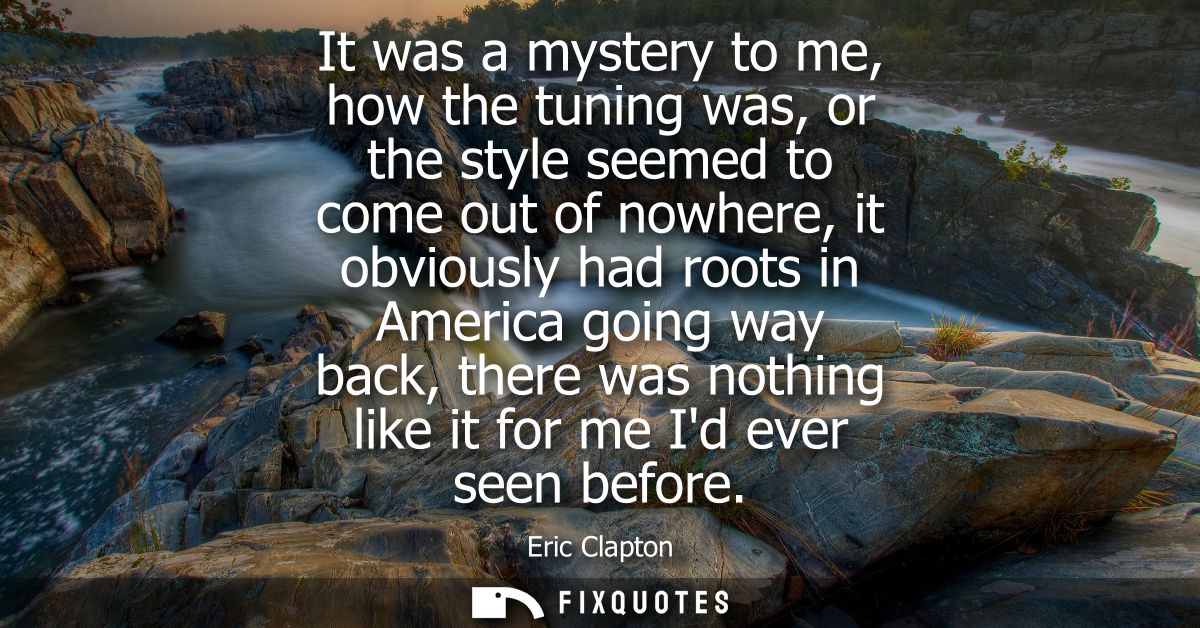"It was a mystery to me, how the tuning was, or the style seemed to come out of nowhere, it obviously had roots in America going way back, there was nothing like it for me I'd ever seen before"
About this Quote
Eric Clapton’s reflection reveals a moment of discovery, an encounter with a form of music that struck him as both enigmatic and deeply resonant. He wonders about “how the tuning was,” expressing confusion or fascination with the technical aspects of the sound he was hearing. Tuning, particularly in blues and early American music, often involved open tunings or slide techniques unfamiliar to British rock musicians in Clapton’s generation. This distinctiveness created an air of mystery, certain notes and moods not typical in mainstream or European-rooted music. For Clapton, an accomplished guitarist, encountering a sound so fundamentally different from his prior experience was both bewildering and inspiring. The “style” that seemed to “come out of nowhere” references both the musical form, perhaps Delta blues or early American folk, and its apparently spontaneous, organic emergence. While it appeared sudden to him, he acknowledges that it “obviously had roots in America going way back.”
This recognition underscores the layered history of American music. Clapton, whose early exposure was shaped largely by British pop and rock, was confronted with the realization that a massive body of influential music existed far outside his previous sphere. He points toward American traditions, likely referencing African-American blues, field hollers, and spirituals, genres that formed the bedrock of rock and roll and modern guitar playing. His statement that “there was nothing like it for me I’d ever seen before” conveys the sense of revelation, he found a musical legacy that felt entirely new, yet possessed a deep, historical authenticity. Such a discovery often leaves musicians, especially guitarists, forever changed. Clapton’s lifelong engagement with blues and American roots music can be traced back to these initial feelings of awe and incomprehension, driving him to explore, emulate, and ultimately help popularize these traditions for audiences beyond their original context.
About the Author

